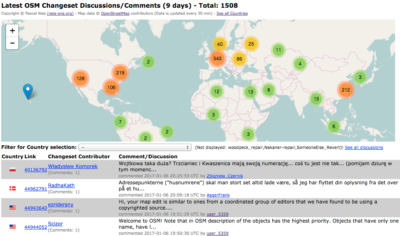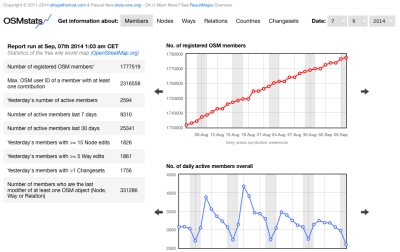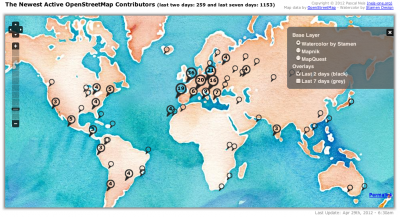Reviewing OpenStreetMap contributions 1.0 – Managed by changeset comments and discussions?
The OSM project still records around 650 new contributors each day (out of almost 5,000 registered members per day). Some countries (such as Belgium or Spain) already provide platforms to coordinate the introduction to OSM for new mappers. Others use special scripts or intense manual work to send the newly registered contributors mails with useful information (Washington or The Netherland). However, oftentimes new contributors make, as expected, beginner-mistakes. Personally, I often detect unconnected ways, wrong tags or rare fictive data. Unfortunately, sometimes (new) members also delete, intentionally or unintentionally, existing map data.
At the end of 2014, many people were anticipating the newly introduced changeset discussions feature. A few months later, I developed a page that finds the latest discussions around the world or in your country. By now, many OSM members use changeset discussions for commenting or questioning map edits of other members.


